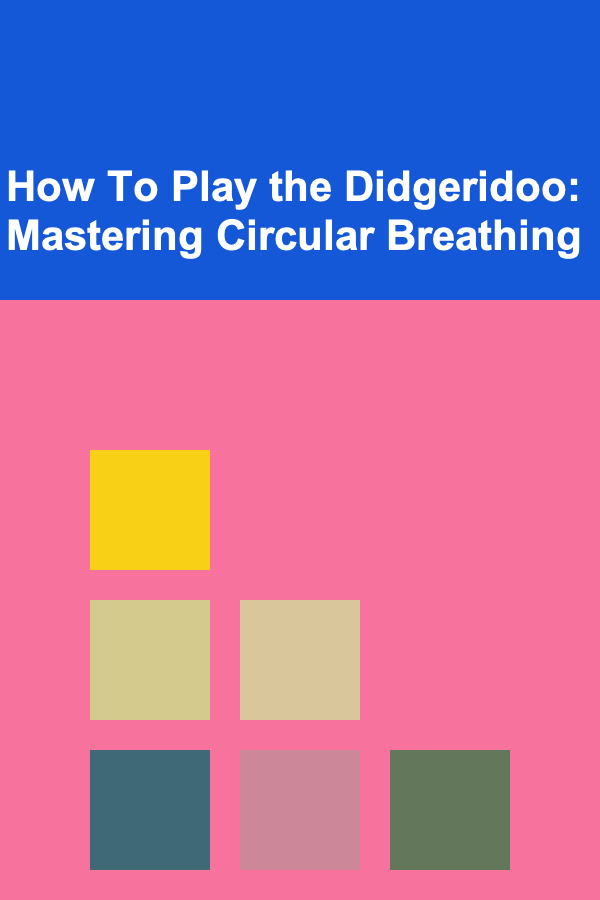
How to Master Draping Techniques as a Fashion Designer
ebook include PDF & Audio bundle (Micro Guide)
$12.99$7.99
Limited Time Offer! Order within the next:

Fashion design is a highly creative field that requires both artistic and technical skills. While many designers start with sketching their ideas, draping is an equally important technique that brings these concepts to life. Draping involves positioning fabric on a mannequin or dress form to create and refine the structure, shape, and details of a garment. For many designers, mastering draping techniques is essential to translating their visions into reality. In this article, we will explore how to master draping techniques, including the basic principles, tools, step-by-step guides, and advanced draping methods that can elevate your design process.
Understanding the Basics of Draping
Draping is a three-dimensional process, and it is often described as an organic technique that involves manipulating fabric directly on a form. Unlike flat pattern drafting, which is based on measurements and drafting on paper, draping allows designers to experiment with fabric in real time and visualize how it behaves. The primary objective of draping is to understand how the fabric will respond to the body, movement, and gravity, which ultimately helps in shaping the final garment.
Before diving into advanced draping techniques, it's important to understand some basic concepts:
- Fabric Choice: Different fabrics have different properties. Some fabrics are heavy and stiff, like denim or wool, while others are light and fluid, like silk or chiffon. Understanding how each fabric reacts to gravity, tension, and manipulation will help you achieve different looks and effects.
- Dress Form: The dress form or mannequin serves as the base for draping. It mimics the human body's proportions, and your draping work will be done on this structure to help you understand fit, proportion, and structure. You can adjust the dress form to match specific measurements to create custom designs.
- Tools: Basic tools for draping include fabric (typically cotton muslin for practice), pins, scissors, draping tape, pattern paper, a ruler, and a marker. You may also use bias tape, thread, and needles when you're securing details on the form.
Steps for Basic Draping
1. Prepare the Dress Form
Start by setting up your dress form, ensuring that it is the correct size and has been adjusted to match the dimensions of the garment you wish to create. If you're making a garment for a client or customer, it's ideal to have a dress form made specifically for their measurements, but for general practice, adjustable dress forms are a suitable option.
You should also ensure the dress form is securely positioned on a stable surface, such as a table or draping stand, so that it doesn't wobble during the process.
2. Select Your Fabric
Muslin is a commonly used fabric for draping because it is inexpensive, versatile, and easy to manipulate. Its neutral color allows you to focus on the design details without distraction. The weight and stiffness of your fabric will influence the final garment's drape and structure, so choose accordingly for your design goals.
3. Start Draping with Basic Shapes
Begin by placing the fabric on the dress form in basic shapes, such as rectangles or squares. Pin the fabric in place and experiment with different folds and pleats to create shapes. Focus on understanding how the fabric responds to the curves and structure of the body. At this stage, don't worry about perfection; simply experiment with how the fabric falls and behaves.
4. Pin the Fabric and Cut
Once you have an idea of how the fabric should fall and fit, begin pinning the fabric along the edges of the form. Use straight pins to hold the fabric in place before making any cuts. Carefully measure the excess fabric and trim accordingly. For areas that require more precision, such as the neckline or armholes, use draping tape to secure and create clean lines.
5. Marking the Design
Once the basic drape is in place, use a fabric marker or chalk to make any necessary markings on the fabric. These markings should outline areas such as the neckline, waistline, bust, or hem. These lines will serve as the foundation for your pattern pieces once you remove the fabric from the dress form.
6. Create a Pattern
After completing the draping process on the dress form, carefully remove the fabric from the mannequin. Lay the fabric flat on a clean surface and trace the markings onto pattern paper to create the pattern for the garment. Remember to add seam allowances and make any adjustments based on how the fabric behaved during the draping process.
Advanced Draping Techniques
Once you are comfortable with basic draping, it's time to explore more advanced techniques. These techniques will help you create complex designs, experiment with volume, texture, and shapes, and give you greater flexibility in your creative process.
1. Draping with Bias Cut
A bias cut is a technique where fabric is cut at a 45-degree angle to its grainline, which allows it to stretch and mold more easily to the body. This technique can create elegant, flowing silhouettes and is often used for dresses, skirts, and tops. Draping on the bias adds a beautiful, sensual drape to the fabric, and understanding how to manipulate fabric this way opens up a new dimension to your designs.
2. Creating Pleats and Tucks
Pleats and tucks are key elements in draping that can transform a basic design into something extraordinary. To create pleats, gather sections of fabric and secure them with pins, allowing for symmetrical, organized folds. Tucks, on the other hand, are small folds that can be used to add texture to a design. Draping pleats and tucks can give garments more structure or fluidity depending on how they are incorporated.
3. Asymmetrical Draping
Asymmetrical designs are a great way to break traditional patterns and create innovative and unexpected looks. Draping fabric in an asymmetrical way allows you to experiment with different angles, hems, and folds. This technique is often used in avant-garde fashion, but it can also be applied to more classic designs to create modern takes on traditional shapes.
4. Layering Fabrics
Layering different fabrics on top of each other is an advanced technique that creates complex textures and depth in your designs. For instance, you may layer a sheer fabric over a more solid base fabric to create an ethereal, sophisticated look. Layering also allows you to create garments with more volume or visual interest, especially when combined with draping techniques like pleating or folding.
5. Draping with Soft Sculpting
Soft sculpting is a draping technique that involves manipulating fabric in such a way that it shapes around the body, almost like molding. Designers can create intricate, three-dimensional textures by carefully pleating, twisting, and draping fabric to give it volume and structure without adding extra material. This technique is often used in high fashion, couture garments, and avant-garde design.
6. Creating a Fitted Bodice
A fitted bodice is a crucial part of many garments, and mastering draping techniques for this part is essential. To create a fitted bodice, begin by placing the fabric on the dress form, pinning it along the bust, waist, and hip lines. You may need to manipulate the fabric by folding, cutting, or adding darts to ensure a smooth, tailored fit that enhances the shape of the body.
Common Mistakes to Avoid in Draping
As you experiment with draping, there are some common mistakes you should be aware of to ensure your designs are successful:
- Not Allowing for Seam Allowances: Always remember to add seam allowances when transferring your drape onto pattern paper. Without seam allowances, the final garment will be too tight or misshaped.
- Not Understanding Fabric Properties: Different fabrics behave differently. For example, lightweight fabrics may need extra support or underlining to prevent them from becoming too flimsy, while heavier fabrics may require more precision in draping to avoid bulkiness.
- Rushing the Process: Draping is a time-consuming technique, and rushing the process can lead to poor results. Take your time to experiment with different designs and adjustments. Often, the best ideas come after hours of manipulation and refinement.
- Ignoring Grainlines: The grainline of a fabric significantly impacts how it drapes and falls. Ensure you're always aware of the grainline and how it relates to your design. Using the wrong grainline can result in a warped, ill-fitting garment.
Conclusion
Mastering draping techniques as a fashion designer takes time, practice, and a deep understanding of fabric behavior. While sketching and pattern drafting are valuable, draping allows you to create designs with a tangible and dynamic approach. By experimenting with basic shapes, fabric manipulation, and advanced draping techniques, you can bring your fashion ideas to life in a more intuitive and innovative way. With persistence and patience, draping will become an essential tool in your design process, allowing you to continuously push the boundaries of creativity.
Reading More From Our Other Websites
- [Home Pet Care 101] How to Keep Your Pet Active During Winter Months
- [Personal Care Tips 101] How to Choose an Eye Cream That Targets Signs of Aging
- [Biking 101] Best Bike Maintenance Tutorials for Beginners: Mastering Basic Repairs & Tune‑Ups
- [Home Space Saving 101] How to Use Hidden Storage in Furniture to Save Space
- [Organization Tip 101] How to Assemble a First Aid Kit for Your Emergency Supplies
- [Home Family Activity 101] How to Create a Family Olympics with Fun Events
- [Organization Tip 101] How to Create an Index for Your Recipe Books
- [Home Rental Property 101] How to Offer Furnished Rentals Without Breaking the Bank
- [Organization Tip 101] How to Use a Calendar for Family Activity Planning
- [Organization Tip 101] How to Use Clear Jars for Pantry Organization

How to Make Money Online as an Aerospace Engineer: 10 Actionable Ideas
Read More
How to Set Up a Pet-Proof Space for Your New Puppy or Kitten
Read More
How to Master 3D Printing for Jewelry Making
Read More
How To Play the Didgeridoo: Mastering Circular Breathing
Read More
How to Bonsai with Driftwood: A Step-by-Step Guide
Read More
How to Ace Your Government Job Application Checklist
Read MoreOther Products

How to Make Money Online as an Aerospace Engineer: 10 Actionable Ideas
Read More
How to Set Up a Pet-Proof Space for Your New Puppy or Kitten
Read More
How to Master 3D Printing for Jewelry Making
Read More
How To Play the Didgeridoo: Mastering Circular Breathing
Read More
How to Bonsai with Driftwood: A Step-by-Step Guide
Read More